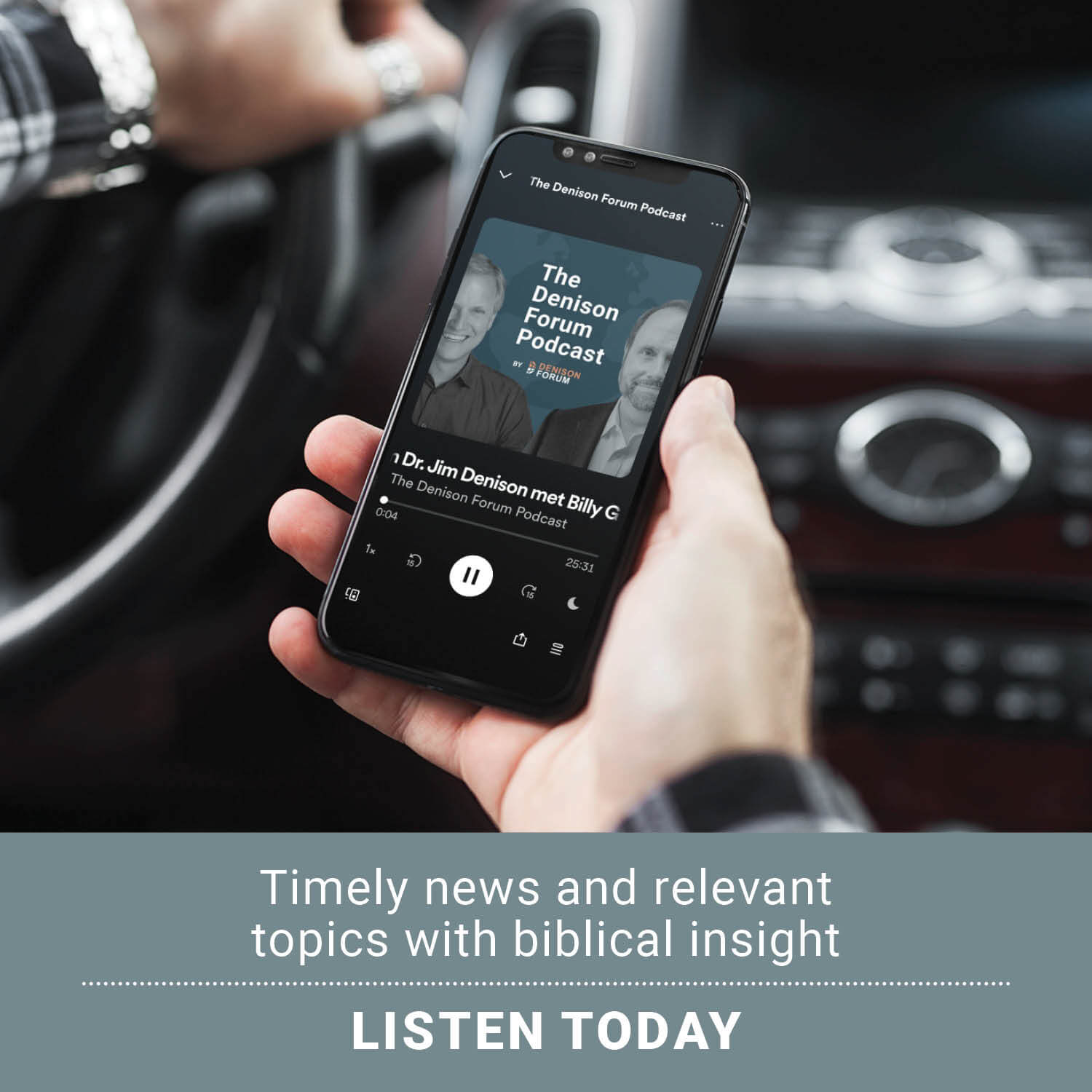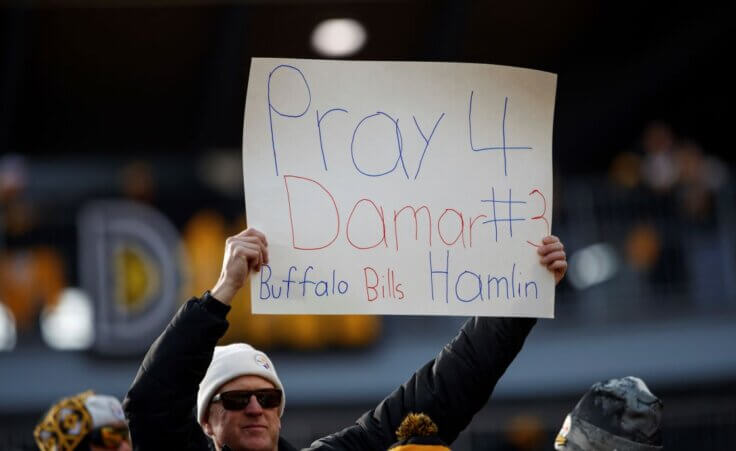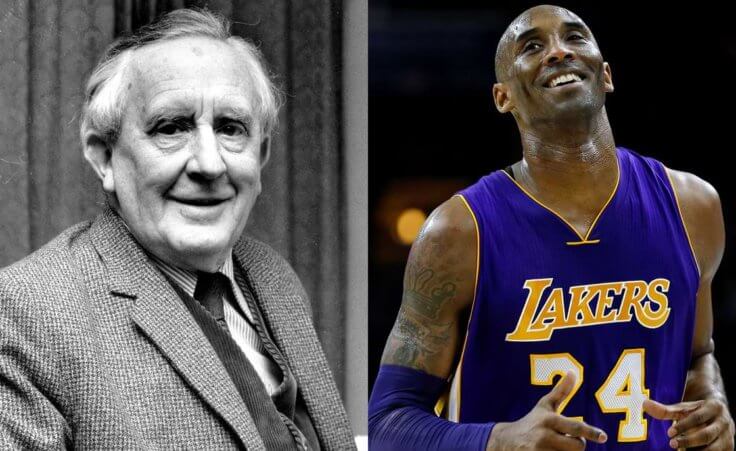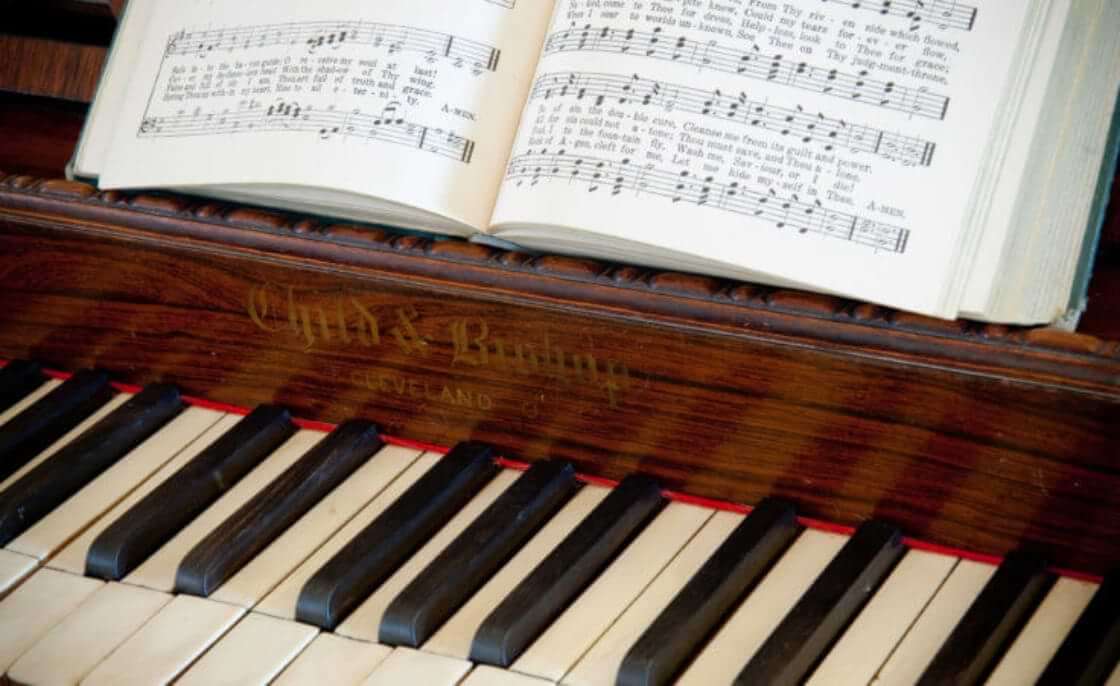
An open hymnbook sits atop a piano. © Don R. Cline /stock.adobe.com
The following adapted excerpt is from Theology That Sticks: The Life-Changing Power of Exceptional Hymns by Chris Anderson. © 2022. Published by permission of Church Works Media.
Chapter 1: The Sticking Power of Christian Music
I don’t like music. I love it.
Music is one of God’s great gifts to humanity. Scripture tells us that God sings (Zephaniah 3:17). And because we’re made in God’s image, we sing too. Part of the imago Dei—the image of God in people—is that we’re hardwired to love the creativity, artistry, and emotion of music.
Especially in the twenty-first century, music is the soundtrack of everyday life. I’m rarely in the car, the study, or even the dining room without some background music playing. Music makes normal life better. Need convincing? Google the countless sports highlights that become comically awesome when you add Celine Dion’s “My Heart Will Go On” to them. Or, conversely, watch the last scene of Star Wars with John Williams’ brilliant music removed. It’s comically awkward and flat. Life is better with music.
The marvel of music
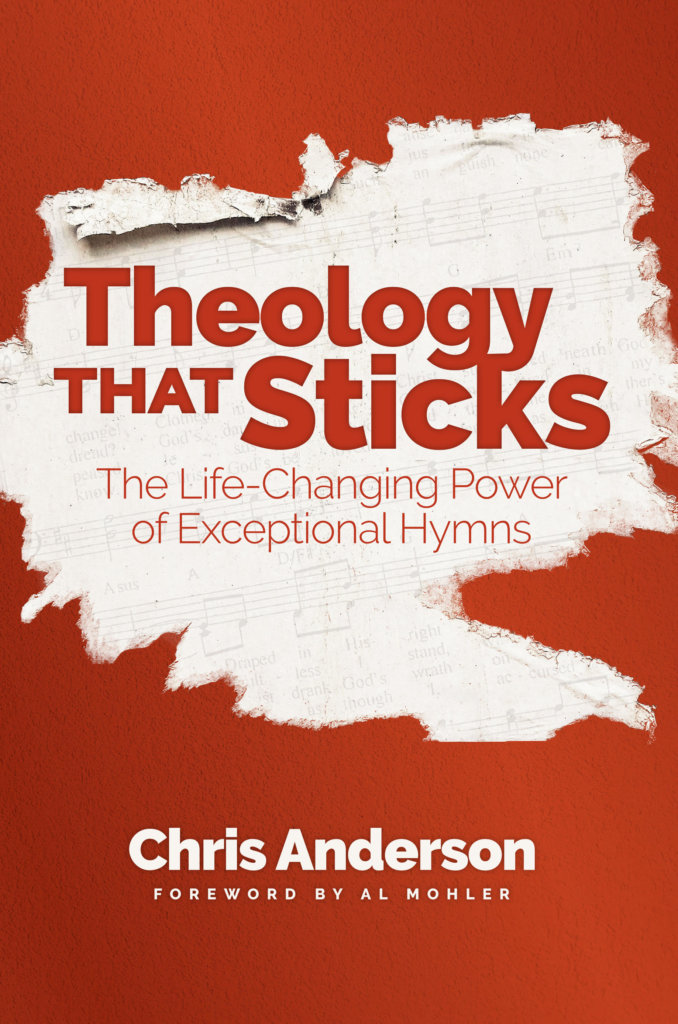 Part of the power of music is its staggering breadth. Although we have just twelve basic notes in the Western scale, they are capable of astoundingly diverse sounds, moods, and messages. For an illustration of music’s majestic breadth, think of a symphony, where woodwinds, brass, strings, and percussion all join forces for one great purpose. Within each of those groups, you have sounds as distinct as a piccolo and a bassoon, a trumpet and a tuba, a violin and an enormous string bass, a xylophone and timpani. Yet, they merge to make mesmerizing music!
Part of the power of music is its staggering breadth. Although we have just twelve basic notes in the Western scale, they are capable of astoundingly diverse sounds, moods, and messages. For an illustration of music’s majestic breadth, think of a symphony, where woodwinds, brass, strings, and percussion all join forces for one great purpose. Within each of those groups, you have sounds as distinct as a piccolo and a bassoon, a trumpet and a tuba, a violin and an enormous string bass, a xylophone and timpani. Yet, they merge to make mesmerizing music!
If symphonic music isn’t your thing (and I can’t imagine why it wouldn’t be!), imagine a bluegrass group if you’d like. Look at the diversity of a banjo, a mandolin, a string bass, a harmonica, a violin (er, a fiddle), a pair of spoons, and maybe even a washboard. (Thank you, Hee Haw, for boyhood lessons.) All of these instruments and household items converge to play a single song—separately, but together. Amazing! Through melody and harmony, rhythm and tempo, musicians are able to contribute widely varying parts to a much greater whole.
That’s all grand. But add words? BAM! Everything becomes even more powerful. A love song—or a break-up song—can stir deep emotions of devotion or loss. A patriotic song can stir different, even stronger emotions. (American readers: Can you make it through Lee Greenwood’s “God Bless the USA” or Epcot’s “Golden Dream” without tears? If so, what is wrong with you?!)
The unique power of sacred music
Yes, music is powerful. But there’s no music so powerful as music that focuses on the very Source of music—our Creator. Music about God doesn’t just tickle the ear or stir the heart; it searches the soul. Powerfully. Deeply. And broadly.
Allen P. Ross captures the power of religious music well:
The use of music in worship is a natural extension of its force in life. It elevates the singers above their mundane experiences by heightening the tone and expression of their speech and thereby increases the celebration. It also intensifies the pathos of prayers and laments, serving as a powerfully therapeutic way of dealing with the dark riddles of life.
Sacred music can be triumphant, like “Crown Him with Many Crowns.” What’s better than singing that on Easter Sunday? The text is mirrored and magnified by the tune, moving upward, step by step, until its glorious climax!
Sacred music can be contemplative, like “Before the Throne of God Above” or “It Is Well with My Soul.” I’ll not forget gathering with a group of believers around the bed of our friend Linda as she neared the end of her battle with cancer. She didn’t want a sermon—she wanted us to sing, so a group of around thirty of her fellow church members met in her home and worshiped with her. Linda barely had the strength to sing along, but she tried. And when, at her request, we sang “It Is Well,” she signed it, using every bit of her energy to lift her brittle hands in praise. My teen daughters wept, and we all learned unforgettable life lessons about faith, unconditional praise, and great hymns. Memorized truth—theology that sticks—gave Linda a song to sing in praise and faith as she walked through the valley of the shadow of death. Books don’t do that. Jokes don’t do that. Even pop songs don’t do that. But hymns do.
James Montgomery Boice expressed the power of sacred music with an enthusiasm that he could barely contain: “Music is a gift from God that allows us to express our deepest heart responses to God and his truth in meaningful and memorable ways. It is a case of our hearts joining with our minds to say, ‘Yes! Yes! Yes!’ to the truths we are embracing.”
I love that. I agree. “Yes! Yes! Yes!” And Boice was a Presbyterian!
We need to sing exceptional music
Because sacred music has such tremendous power, we need to use songs that are exceptional. Seek the best and leave the rest. Dump the dross. Chuck the chaff. Does that sound too negative? Calvin M. Johansson writes, “The fact is that for two thousand years church music has been carefully screened.” It was a good thing for hymns to have to make it through an editorial sieve before getting into hymnals. We live in a world in which people are obsessively careful about what they put into their mouths. Fine. But what about what comes out of your mouth? What about what enters your ears, and thereby, your permanent memory?
There are thousands of songs available to churches and individuals. Saying yes to one is saying no to every other one. It stands to reason, then, that you should choose what’s best. The goal of this book is to help define “what’s best”—to provide a biblical and practical grid for selecting great songs to sing together as a church and to serenade yourself with on your commute.
It’s actually pretty simple. Identify the best songs and sing them. That’s it. (I once went off-script when I presented this information at a conference workshop and just said, “Don’t sing dumb stuff!” Alas, that would have made a great book title.)
Why do I believe this issue is nothing less than urgent for the modern church? That’s easy. We need to sing great hymns because hymns teach people how to think about God. The songs you sing in church teach—for better or for worse. Some teach doctrinal truth. Some teach doctrinal error. Some teach that we value nostalgia. Some teach that we value tradition. Some, I’m convinced, teach that we value carousels and polkas. But they teach, nevertheless. As the Gettys warn, “A good melody with unhelpful words is a powerful and deadly combination.”
Hymns are rhyming, rhythmic theology. Our songs must be held to the same standards as our sermons. Our songs matter. We need to choose the best songs and do so on purpose.
Music is amazing. And hymns are moving and memorable theology. They stick. So let’s talk about how to choose them on purpose.
For more, read Theology That Sticks: The Life-Changing Power of Exceptional Hymns by Chris Anderson. You can also find Chris’ hymns and writing at churchworksmedia.com.

